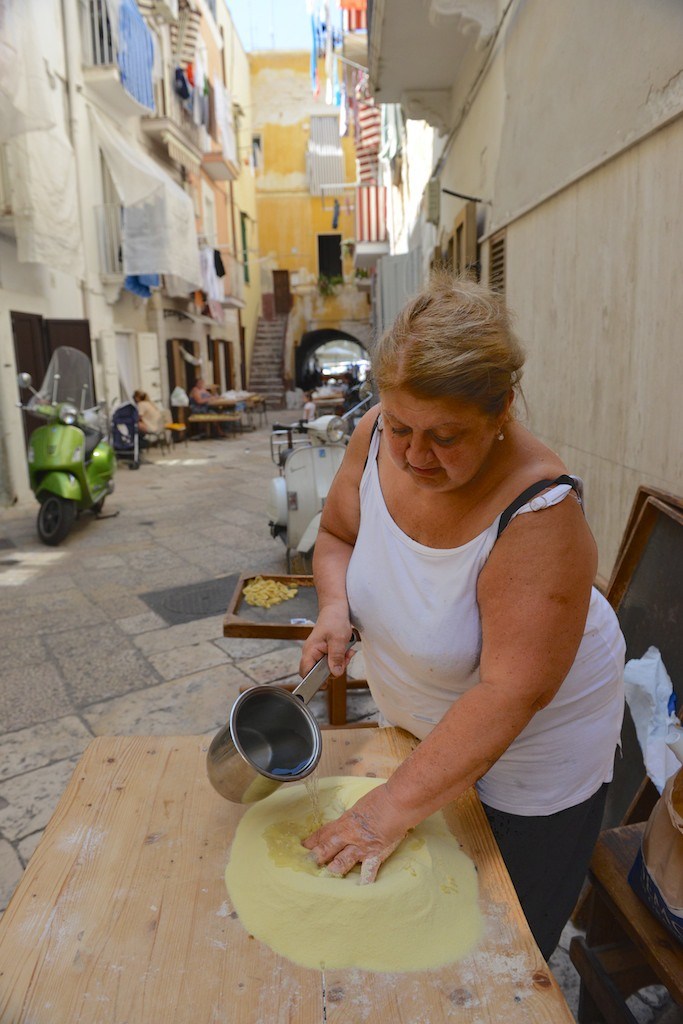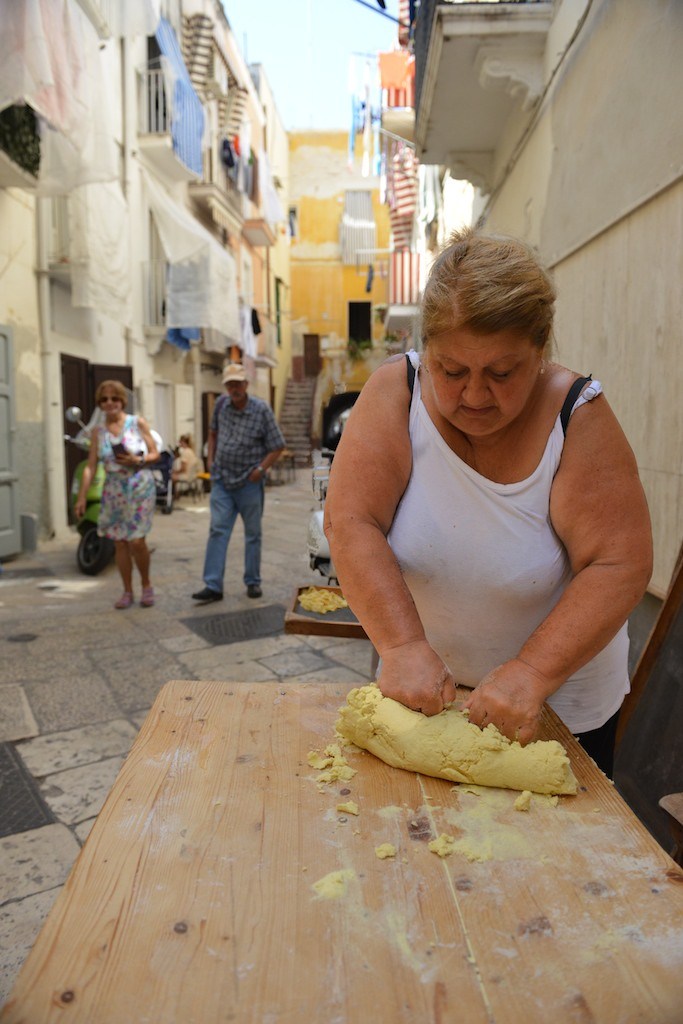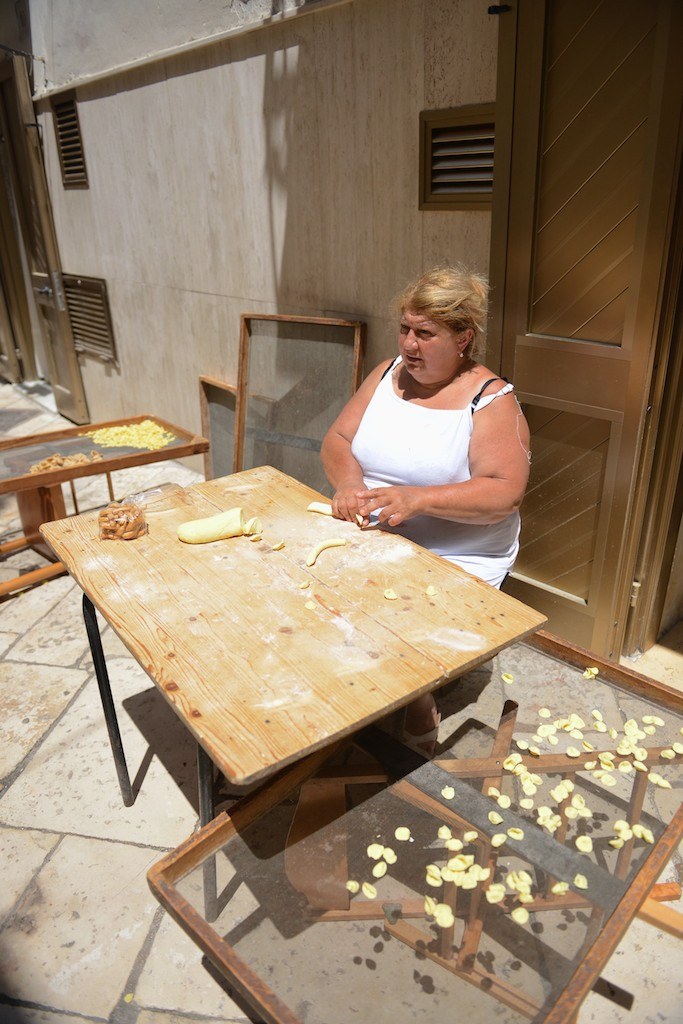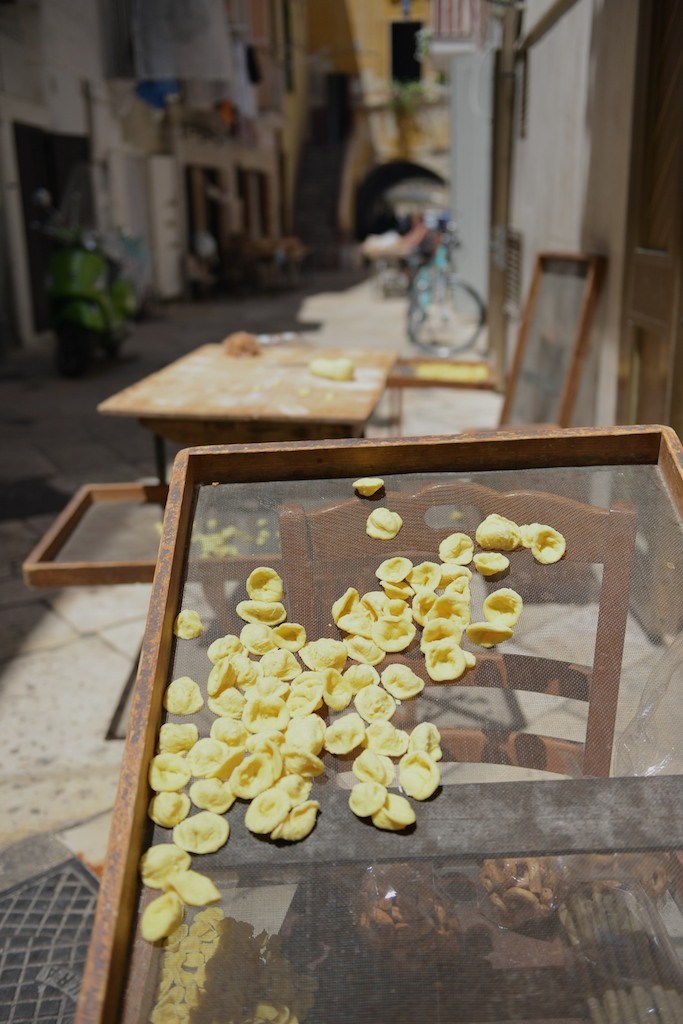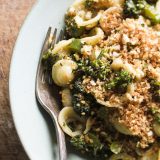Sitting at a wobbling wooden table on the cobblestone street just outside her home, arms solid from 54 years of kneading pasta, Nunzia da Scalo effortlessly works a pile of semolina flour and a bit of water into a bowling ball-size mound of pale, skin-soft dough. It’s a scene on repeat at tables stationed streetside outside kitchens across Bari.
Da Scalo rolls hunks of the dough into thin ropes, and cuts each into ½-inch chunks. Then—with a quick flip of a small knife—one at a time she drags each chunk across the table, transforming it into the tiny cup-like orecchiette pasta for which Puglia (the heel of the Italian boot) is known. They will dry on a screen in the sun for an hour before being bagged and sold to passersby and local chefs who whir past on scooters.
In the north of Italy, pasta is a flour-and-egg affair. In the south, where poverty shaped the cuisine, eggs were a luxury. Semolina flour and water, and nothing else. The result is tender and meaty. And when shaped as orecchiette—literally, little ears—it is exceptionally good at cupping bits of chunky sauce.
One such sauce is what brought me to da Scalo’s home—orecchiette con cime di rapa, or pasta with bitter greens. A heap of orecchiette studded with bits of broccoli rabe, all assembled in a skillet and married with savory anchovies and pops of chili.
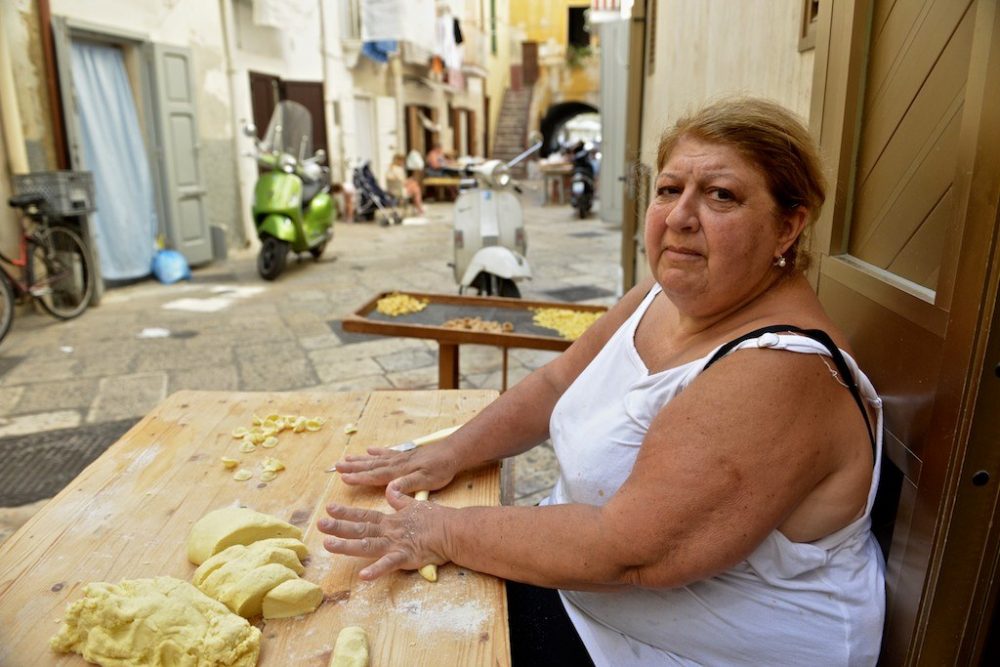
In Bari, pasta is made streetside with just semolina flour and water.
It seems too simple to be so good. But the starchy, chewy pasta balances the bittersweet broccoli rabe. The anchovies melt, bathing the other ingredients without dominating. Rather than add real heat, the chili flakes brighten and lighten.
As da Scalo leads me into her kitchen, where 25-kilogram sacks of semolina lean in a corner, I have one concern. I’d learned a version of this dish years ago outside Pisa, where the finished dish is doused with grated Parmesan. In Puglia, cheese also was a luxury. They prefer the poor man’s alternative: breadcrumbs. I wonder whether this dish will be nearly as good.
Da Scalo’s method is simple. As the pasta cooks, the broccoli rabe is blanched and anchovies are sautéed in copious olive oil, melting into a savory sauce. When ready, the orecchiette and greens are added, cooked for a moment, then finished with a flourish of chili flakes and breadcrumbs.
When I take a bite, I expect it to be flat without the cheese. Quite the opposite. Uncluttered by the heft of dairy, the bitter broccoli rabe, savory anchovies and punchy chili flakes shine brighter. The breadcrumbs add texture, a pleasant crunch that soaks up the flavorful sauce.
Back at Milk Street, we opted for broccolini over harder-to-find broccoli rabe. And we first toasted the breadcrumbs with olive oil and half the anchovies to ensure the breadcrumbs would be just as flavorful as the rest of the dish. The result was both savory and rich. No cheese needed.
More From Bari
